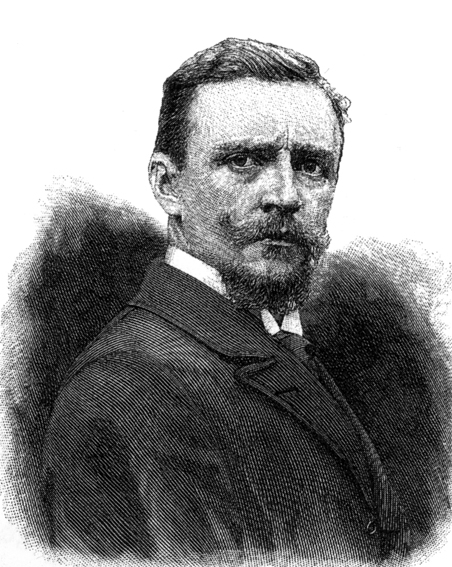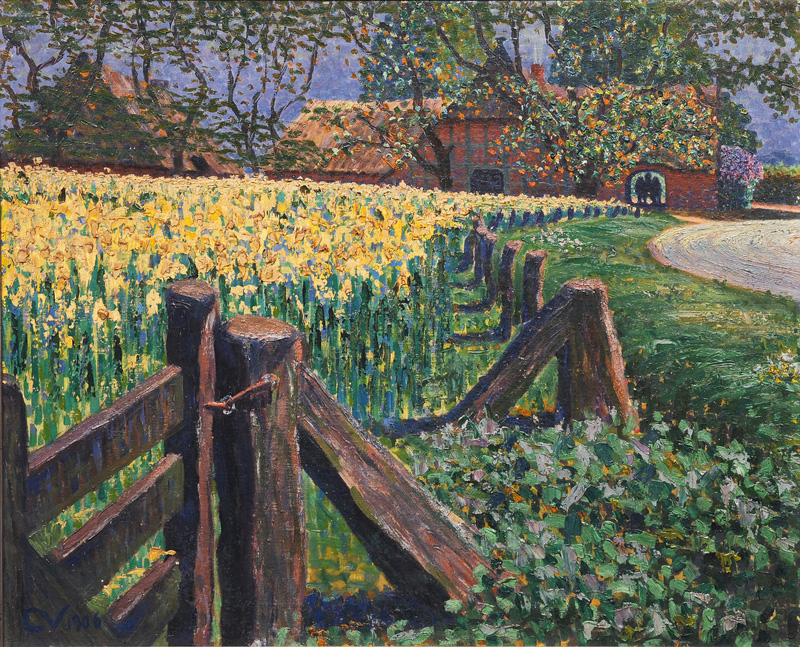Carl Vinnen on:
[Wikipedia]
[Google]
[Amazon]
 Carl Vinnen (28 August 1863,
Carl Vinnen (28 August 1863,
 In Düsseldorf, he made the acquaintance of
In Düsseldorf, he made the acquaintance of 
Online @ UB HeidelbergOnline @ Archive.org
* "Vinnen, Carl", In: ''Allgemeines Lexikon der Bildenden Künstler von der Antike bis zur Gegenwart'', Vol. 34: Urliens–Vzal, E. A. Seemann, Leipzig 1940
More works by Vinnen
@ ArtNet *
Profile and notes
@ Artfacts {{DEFAULTSORT:Vinnen, Carl 1863 births 1922 deaths German painters German landscape painters Kunstakademie Düsseldorf alumni Worpswede Artists from Bremen (city) People from the Free and Hanseatic City of Bremen
 Carl Vinnen (28 August 1863,
Carl Vinnen (28 August 1863, Bremen
Bremen (Low German also: ''Breem'' or ''Bräm''), officially the City Municipality of Bremen (german: Stadtgemeinde Bremen, ), is the capital of the German state Free Hanseatic City of Bremen (''Freie Hansestadt Bremen''), a two-city-state consis ...
- 16 April 1922, Munich
Munich ( ; german: München ; bar, Minga ) is the capital and most populous city of the States of Germany, German state of Bavaria. With a population of 1,558,395 inhabitants as of 31 July 2020, it is the List of cities in Germany by popu ...
) was a German landscape painter. He was also a writer, on various topics of local interest, under the pseudonym
A pseudonym (; ) or alias () is a fictitious name that a person or group assumes for a particular purpose, which differs from their original or true name (orthonym). This also differs from a new name that entirely or legally replaces an individua ...
"Johann Heinrich Fischbeck".
Life and work
He was born to Johann Christoph Vinnen (1829-1912), a shipping company owner, and his wife, Jenny Friederike née Westenfeld, who died when Carl was only seven. His younger brother, , also went into the shipping business and became a politician. After finishing school, he worked for his father's company. At the age of twenty-three, he began his studies at theKunstakademie Düsseldorf
The Kunstakademie Düsseldorf is the academy of fine arts of the state of North Rhine Westphalia at the city of Düsseldorf, Germany. Notable artists who studied or taught at the academy include Joseph Beuys, Gerhard Richter, Magdalena Jetelová, ...
, with Heinrich Lauenstein and Hugo Crola. He also took private lessons from Eugen Dücker
Eugen Gustav Dücker (also ''Eugène Gustav Dücker''; , in Arensburg (now Kuressaare, Estonia) – 6 December 1916, in Düsseldorf) was a Baltic German painter, in the Romantic atyle, associated with the Düsseldorfer Malerschule.
Biograph ...
. In 1888, he continued his studies in Karlsruhe
Karlsruhe ( , , ; South Franconian: ''Kallsruh'') is the third-largest city of the German state (''Land'') of Baden-Württemberg after its capital of Stuttgart and Mannheim, and the 22nd-largest city in the nation, with 308,436 inhabitants. ...
. He was heavily influenced by the works of Arnold Böcklin
Arnold Böcklin (16 October 182716 January 1901) was a Swiss symbolist painter.
Biography
He was born in Basel. His father, Christian Frederick Böcklin (b. 1802), was descended from an old family of Schaffhausen, and engaged in the silk tra ...
, and focused on painting melancholy landscapes.
 In Düsseldorf, he made the acquaintance of
In Düsseldorf, he made the acquaintance of Fritz Mackensen
Fritz Mackensen (born 8 April 1866 in Greene, near Kreiensen, Duchy of Brunswick – 12 May 1953 in Bremen) was a German painter of the Düsseldorf school of painting and Art Nouveau. He was a friend of Otto Modersohn and Hans am Ende, an ...
and Otto Modersohn
Friedrich Wilhelm Otto Modersohn (22 February 1865, Soest – 10 March 1943, Rotenburg) was a German landscape painter. He was a co-founder of the Art Colony at Worpswede.
Life
In 1884, he began his studies at the Art Academy of Düsseldorf ...
, who would later be among the founders of the . Although he never actually lived there, he came to be perceived as a member, and helped create the "Künstlervereinigung Worpswede" (artist's association), to promote their works; an enterprise for which his earlier commercial training proved useful. A joint exhibition by the Colony and the Munich Secession
The Munich Secession was an association of visual artists who broke away from the mainstream Munich Artists' Association in 1892, to promote and defend their art in the face of what they considered official paternalism and its conservative polic ...
, at the Glasplast in 1895, received critical praise.
He maintained a studio at the family estate in Osterndorf. In winter, he painted from a portable, heated studio. Thanks to his family's wealth, he could afford to travel often; not only throughout Europe, but to Asia and Africa as well. In 1902, when the poet, Rainer Maria Rilke
René Karl Wilhelm Johann Josef Maria Rilke (4 December 1875 – 29 December 1926), shortened to Rainer Maria Rilke (), was an Austrian poet and novelist. He has been acclaimed as an idiosyncratic and expressive poet, and is widely recogni ...
, wrote a book about the Worpswede Colony, Vinnen declined to be included. That same year, he became engaged, to Anna Lagemann, but the wedding did not take place until many years later.Congratulatory letter from Rainer Maria Rilke to Carl Vinnen of 6 September 1902 In 1903, he was awarded a small gold medal at the Große Berliner Kunstausstellung
Große Berliner Kunstausstellung (Great Berlin Art Exhibition), abbreviated GroBeKa or GBK, was an annual art exhibition that existed from 1893 to 1969 with intermittent breaks. In 1917 and 1918, during World War I, it was not held in Berlin bu ...
. Shortly after, he became a member of the Deutscher Künstlerbund
The Deutscher Kuenstlerbund (Association of German Artists) was founded in 1903 the initiative of Count Harry Kessler, promoter of arts and artists, Alfred Lichtwark, director of the Hamburg Art Gallery and the famous painters Lovis Corinth, Ma ...
.
In his later years, he moved away from his association with Worpswede. In 1908, he physically moved, from Osterndorf to Cuxhaven
Cuxhaven (; ) is an independent town and seat of the Cuxhaven district, in Lower Saxony, Germany. The town includes the northernmost point of Lower Saxony. It is situated on the shore of the North Sea at the mouth of the Elbe River. Cuxhaven has ...
, where he focused on maritime motifs. In 1911, he led a protest against the growing influence of French art; occasioned by the acquisition of Van Gogh
Vincent Willem van Gogh (; 30 March 185329 July 1890) was a Dutch Post-Impressionist painter who posthumously became one of the most famous and influential figures in Western art history. In a decade, he created about 2,100 artworks, inclu ...
's ''Poppy Field'', by the Kunsthalle Bremen
The Kunsthalle Bremen is an art museum in Bremen, Germany. It is located close to the Bremen Old Town on the "Culture Mile" (german: Kulturmeile). The Kunsthalle was built in 1849, enlarged in 1902 by architect Eduard Gildemeister, and expanded ...
; under the direction of Gustav Pauli
Theodor Gustav Pauli (usually Gustav Pauli) (2 February 1866, Bremen – 8 July 1938, Munich) was a German art historian and museum director in Bremen and Hamburg.
Early life and career
Gustav Pauli was the son of Bremen city senator and m ...
. He published several manifestos on the subject.
At the beginning of World War I
World War I (28 July 1914 11 November 1918), often abbreviated as WWI, was one of the deadliest global conflicts in history. Belligerents included much of Europe, the Russian Empire, the United States, and the Ottoman Empire, with fightin ...
, he moved to Munich, where he had a second home. After the war, in 1919, he finally married his longtime fiancée, Anna. Within a few months, he suffered a stroke. He died of a second stroke in 1922, and was interred at his family's private cemetery in Osterndorf.

References
Further reading
* Hans Wohltmann: "Vinnen, Carl", in: Otto Heinrich May (Ed.): ''Niedersächsische Lebensbilder'', Vol. 5, 1962, pg.305 * Almuth Sayk zu Jeddeloh: ''Carl Vinnen''. (exhibition catalog) Barkenhoff Worpswede, Worpsweder Verlag, Lilienthal, 1995 * ''Im Kampf um die Kunst: die Antwort auf den Protest deutscher Künstler'', R. Piper, München 1911Online @ UB Heidelberg
* "Vinnen, Carl", In: ''Allgemeines Lexikon der Bildenden Künstler von der Antike bis zur Gegenwart'', Vol. 34: Urliens–Vzal, E. A. Seemann, Leipzig 1940
External links
More works by Vinnen
@ ArtNet *
Profile and notes
@ Artfacts {{DEFAULTSORT:Vinnen, Carl 1863 births 1922 deaths German painters German landscape painters Kunstakademie Düsseldorf alumni Worpswede Artists from Bremen (city) People from the Free and Hanseatic City of Bremen